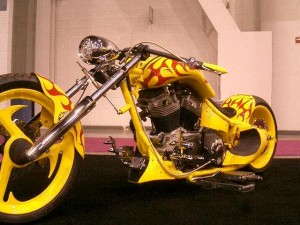 Since its introduction in North America in 1960, powder coating has become the fastest growing finishing technology. It currently represents more than 15 percent of the total finishing market, according to the Powder Coating Institute (PCI).
Since its introduction in North America in 1960, powder coating has become the fastest growing finishing technology. It currently represents more than 15 percent of the total finishing market, according to the Powder Coating Institute (PCI).
More and more manufacturers for countless products have switched from liquid finishing to powder coating as a way to produce a high-quality and durable finish while maximizing production, cutting costs, improving efficiency, and complying with increasingly stringent environmental regulations.
Powder Coating works by applying an electrostatic charge to the powder. Which is then applied to a grounded part via a spray gun. After the powder coating is applied the part is then cured using heat from a specialized oven. While the powder cures the pigments mixed with resins within the powder chemically react. This creates the hardened, durable coat to a part.
Powder coating creates a durable finish that is unmatched using liquid finishing techniques. As a result, powder coated finishes provide excellent protection against physical and chemical degradation. This increases the durability of the item coated for longer continued use.
USES
Powder coating is used on metal substrate and non-metallic substrates such as plastics and medium density fiberboard (MDF):
- kitchen and household appliances
- outdoor furniture
- large tractors
- automobiles
- lawn mowers
- fire extinguishers
- furnaces
BENEFITS
Powder coating is:
- Highly durable and long-lasting in a variety of environments
- Difficult to scratch or chip
- More environmentally friendly than liquid finishes
- Applied in an efficient process, resulting in cost savings
In addition, powder coating cost about 30% less than liquid application.
Whether you want a fully automated conveyor system, a smaller batch powder coat system, or you just need a bigger curing oven, let the powder coating experts at Powder-X guide you through the process of getting started.
[maxbutton id=”1″]